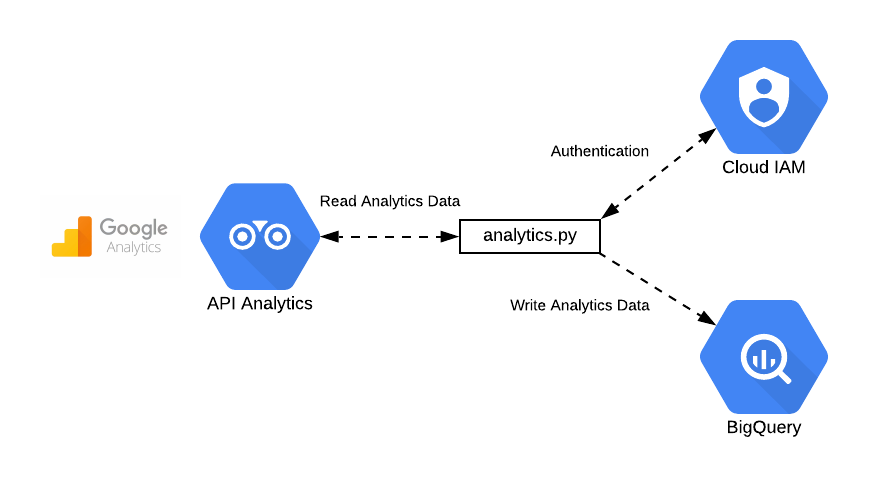Many governments worldwide face an almost age-old dilemma: citizens demand rapid, convenient, and transparent services, yet public agency administrations have limited resources, outdated systems, and are overworked. Making people wait weeks before a permit is granted, spending hours to receive an update on an application, or moving at a crawl trying to navigate a complicated benefits program is draining the very lifeblood of the people that the government was designed to serve.
However, consider a life in which a smart digital assistant operates 24 hours round-the-clock to respond to citizens, handle mundane requests, and direct people on government programs patiently and accurately. That’s the vision behind Agentforce for Public Sector, an artificial intelligence platform designed specifically for government agencies.
What is particularly decisive about this launch is that Agentforce has received FedRAMP High authorization, the most exhaustive standard of security authorization in the federal government. This is going to ensure that agencies obtain more than a state-of-the-art AI assistant; they will get one that satisfies the utmost standards of trust, compliance, and safety.
Why FedRAMP High Matters
The Federal Risk and Authorisation Management Program is commonly abbreviated as FedRAMP, and is seen as the standard for achieving cloud technology security within government. Any cloud service provider against which the program is enforced must comply with strict referential requirements regarding encryption, data processing, auditing, and incident response.
The highest tier of FedRAMP authorisation is required of systems handling the most sensitive data, such as personally identifiable information, health records, data used by law enforcement agencies, or even mission-critical government functions. With FedRAMP High, agencies can feel comfortable using a given platform without involving long-winded security exceptions and other approval procedures.
This is revolutionary when it comes to AI in the government. The use of AI tools can lead to concerns about privacy loss, potential bias, or information abuse. By attaining FedRAMP High, Agentforce surmounts one of the largest obstacles: agencies are assured that the platform has undergone three levels of verification, is hardened, and the product is designed with trust as a core value. That facilitates easier and quicker adoption.
How Agentforce Actually Works
There are three key building blocks that collaborate to deliver their functionality in understanding Agentforce:
1. The Reasoning Engine
The Agent Console provides a unified dashboard where agents can access all customer interactions, case details, and AI-powered recommendations in one place. The customizable interface allows businesses to tailor workflows, automate routine tasks, and improve case resolution times. By consolidating customer data from multiple sources, the console ensures seamless interactions and faster issue resolution.
2. The Trust layer
Agentforce automatically directs customer queries to the most suitable agent based on their skills, workload, and availability. This smart routing system reduces wait times, balances workloads, and ensures customers get the right support faster. Additionally, businesses can prioritize cases based on urgency, ensuring high-priority issues are addressed promptly.
3. Ready-to-Use Actions
The Government need not design AI tools on its own. Agentforce is equipped with a bank of standard functions, including checking eligibility, summarising documents, and producing reports. They can be adjusted, but a solid foundation is provided to get started quickly.
Combined with these sections, agencies can create digital agents without huge IT departments or years of development.
A Real-World Example: The City of Kyle, Texas
Among the most thrilling exhibitions of Agentforce are those in the City of Kyle, Texas. The city initiated AI-enabled 311 (the non-emergency call used by citizens to report city-related matters).
Prior to AI, residents may have had to wait as a staff member entered the information, and employees had spent numerous hours inputting issues and routing them. In Agentforce the city now answers almost 9 out of ten requests on the initial contact.
To the locals, it means quicker decisions to resolve issues, such as a broken streetlight, a missing rubbish pick-up request, or a question about water service does not become a one or two-day shell game. To staff, it signifies decreased time spent on the phone answering the same questions and increased time devoted to more complex cases.
Very well, no efficiency is all, but better trust. Citizens develop trust in local institutions when they witness the government acting fast and efficiently.
What’s Available Today and What’s Coming Next?
Agentforce is rolling out in stages, giving agencies access to new capabilities over time. As of today, governments can use it for areas such as:
Compliance Management: Assisting inspectors and staff in reviewing permits, licenses, and regulations.
Complaint Management: Logging, categorising, and summarising citizen feedback.
Recruitment Management: Screening resumes, answering candidate questions, and improving applicant experience.
Later this year, additional modules will expand to cover
Job Recommendations: Helping citizens find government employment opportunities tailored to their skills.
Benefits Applications: Guiding applicants through complex forms and ensuring they submit the right documents.
Citizen Assistance: Offering real-time support for navigating services like healthcare, housing, and social programs.
This phased approach allows agencies to start small, prove value, and then scale.
Preparing for Implementation
The following steps should be considered by the agencies willing to implement Agentforce:
1. Make sure to be licensed and set up
The government systems that Agentforce collaborates with are entitled to individual editions. Before launching, agencies must ensure that they have the right platforms and licenses.
2. Solidify Information Underpinnings
The quality of what AI agents can do is as good as the information it is based on. Agencies need to attempt to bring together structured data (such as case files) and unstructured data (such as PDFs or scanned forms). Clean and orderly data enable agents to provide accurate answers.
3. Fast Track Security
FedRAMP High authorisation still requires agencies to implement zero-trust within their organisations. This implies restricting the use of the system, tracking interactions, and regularly reviewing audit logs.
4. Pilot Before Scaling
Trust is most easily created in small chunks. Pilot projects can examine responses within a sandbox environment to ensure everything is correct before releasing the system to the public.
5. Set Measurable Goals
The results of reduced waiting and call times, or faster case resolution, or the amount of staff time saved per week should be tracked by the agencies in order to support the value. When digital agents are treated as team members, including setting performance targets, accountability can be ensured.
The Bigger Picture: Why This Matters Now
There are special pressures on the organizations represented in the public sector. Limited resources are overburdened by staffing shortages, increasing populations, and rising citizen expectations. Conventional ways do not allow it to keep up.
AI is a promising solution, although its usage has been slow due to insufficient trust and security. This is why FedRAMP High certification marks a watershed moment, as it removes the largest obstacle to AI use at scale in government.
In addition to efficiency, there is the question of equity. The agents of AI do not exhaust themselves, lose patience, or forget to follow procedures. This implies that citizens get quality standard service without any prejudice on who they are, or at what time they are calling. When this is done well, it can aid in the mitigation of government program inequities.
What Makes Agentforce Different
Many AI solutions exist, but few are tailored for government. Agentforce stands out because it combines:
Security and Trust: Built with compliance from the ground up.
Ease of Use: No need for deep technical expertise to configure agents.
Integration: Tightly linked with existing government systems for seamless workflows.
Scalability: Able to start small and expand across departments.
Citizen Focus: Designed not just for internal staff but for improving the resident experience.
This combination makes it a practical, sustainable choice for agencies of all sizes.
Future: How AI will Change the Government
It is only Agentforce. In the long run, AI agents can likely be trained to perform even more complex tasks, but not disaster response planning or assisting veterans with healthcare navigation.
We can observe domain-specific agents, such as those trained to perform the work of a specific area (e.g., public safety), another (e.g., environmental protection), or a third (e.g., urban planning). These agents were able to work on large volumes of data, forecast trends, and give information to politicians.
Meanwhile, human control will be particularly important. AI is not taking the place of people; it is their companion. Governments will be forced to strike a balance between automation and caring to ensure that the human touch is not lost.
Final Thoughts
The concept of Agentforce in the Public Sector is a change in the mentality of governments concerning service. Agencies can provide digital support that is responsive, reliable, and secure instead of slow, manual processes. Workers find new digital team members instead of overworked colleagues and complete the monotonous section of the task.
And rather than citizens experiencing countries as frustrated or closed, citizens feel that the government is open and accessible, as well as being transparent and modern.
Everything depends on the technology itself, not so much on what it has allowed, but more on human governments, because they have been relieved of the trappings of non-relevant technologies. Using FedRAMP High as its foundation, Agentforce can become one of the other tech products, but a pillar of digital government in the years to come. Get in touch today to discuss Agentforce implementation for your organization. To learn more about our services, please visit us or contact us directly.








